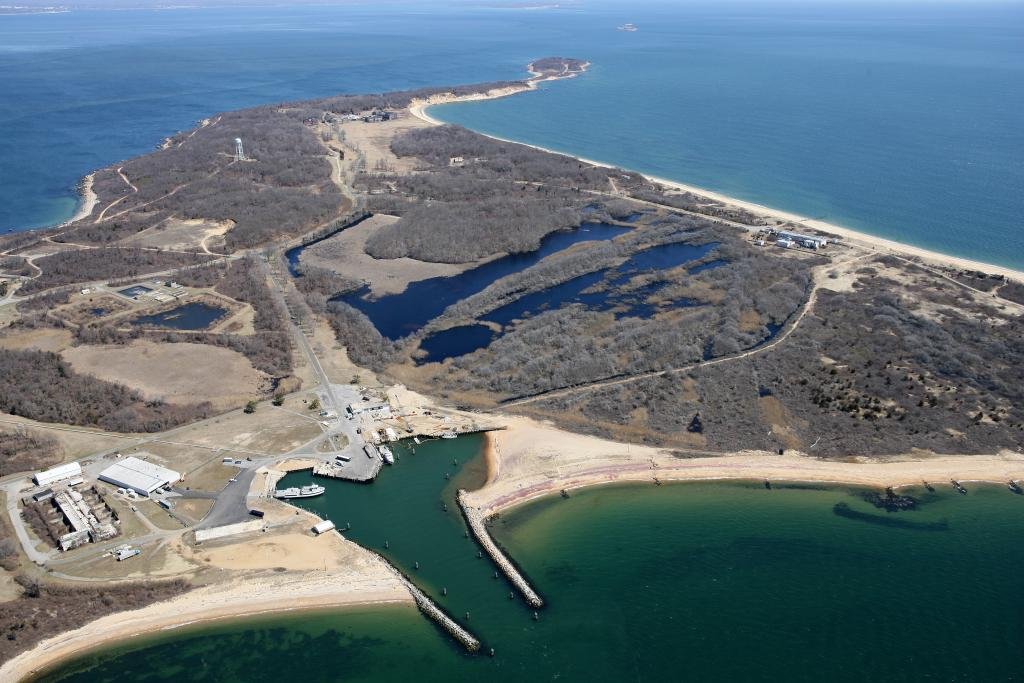Plum Island: Origins, Work, Controversies
What is Plum Island?
Plum Island is a small island off the northeastern tip of Long Island, New York. Since 1954, it has housed a federal research facility, called the Plum Island Animal Disease Center (PIADC), dedicated to studying “foreign animal diseases” — that is, infectious diseases that affect livestock, often ones not normally present in the U.S., with the potential to devastate agriculture. Wikipedia+2Department of Homeland Security+2
Origins & Early History
-
The site originally was Fort Terry, a coastal fortification. Wikipedia+2dspace.sunyconnect.suny.edu+2
-
In the early 1950s, as outbreaks of contagious livestock disease (like foot-and-mouth disease, or FMD) occurred in neighboring countries (Mexico, Canada), the U.S. government decided to establish a special facility to study these foreign animal diseases in isolation. dspace.sunyconnect.suny.edu+2agresearchmag.ars.usda.gov+2
-
In 1954, the island and laboratory responsibilities were transferred from the U.S. Army / Chemical Corps to the U.S. Department of Agriculture (USDA). Wikipedia+2dspace.sunyconnect.suny.edu+2
What Work Has Been Done There
Here are some of PIADC’s major roles, accomplishments, and the scope of its work:
-
Research and Diagnostics of Foreign Animal Diseases (FADs): The center studies diseases like foot-and-mouth disease (FMD), African swine fever (ASF), classical swine fever, etc., which can affect cattle, pigs, and other livestock. Wikipedia+1
-
It is the only facility in the U.S. authorized to work with live FMD virus. Because that disease is so contagious among hoofed animals, studying it requires very strict biosafety measures. Wikipedia+2Department of Homeland Security+2
-
Development of vaccines, diagnostics, and tools to detect and respond to outbreaks. For example, in 2011-2012, PIADC scientists helped develop a molecular vaccine for foot-and-mouth disease that does not require live FMD virus in the manufacturing process. Department of Homeland Security+2Department of Homeland Security+2
-
A training mission: foreign animal disease diagnostic schools for veterinarians and lab staff; preparedness and response roles. agresearchmag.ars.usda.gov+2Department of Homeland Security+2
Who Lived and Worked There
-
The staff are federal scientists, veterinarians, lab technicians, diagnostic lab employees. PIADC is operated cooperatively by DHS (Department of Homeland Security) and USDA. Department of Homeland Security+2Wikipedia+2
-
Because of the island’s security, most people commute from mainland; the facility has restricted access. Wikipedia
-
There was a Building 257 / Lab 257, and Building 101 etc., older lab and storage buildings. Some were used for early biological warfare research against animal diseases. Wikipedia+2Wikipedia+2
Biological Weapons / Military Research
-
Part of the original mission included anti-animal biological weapons research during the Cold War. That means exploring ways in which disease agents that affect animals (not humans) could possibly be used as weapons. Wikipedia+2Wikipedia+2
-
That program was officially ended in 1969 by President Nixon, when the U.S. terminated its offensive biological weapons program. Wikipedia+1
Known Controversies and Speculation
There are a number of controversies, rumors, and conspiracy theories around Plum Island. Some have some basis in fact; others are speculative or false.
Examples of controversies / rumors:
-
Rumors that Lyme disease originated from Plum Island; however, Lyme disease has never been studied there and government/official sources deny any connection. Department of Homeland Security+1
-
Concerns about safety, accidental leaks, or faulty building containment (older buildings, maintenance issues) have been raised. dspace.sunyconnect.suny.edu+2Government Accountability Office+2
-
Plans to move operations to a new facility (“National Bio and Agro-Defense Facility” in Kansas) and what will happen to the island. Wikipedia+2Wikipedia+2
Did Any Work at Plum Island Violate U.S. or International Laws or Treaties?
Here’s what the record shows — what’s known vs what is not proven.
What is known and legal
-
The U.S. government has legal authority for its research on foreign animal diseases, under laws governing agricultural protection, animal health, biosecurity, etc. There is oversight by agencies like USDA, APHIS, and regulations about biosafety. PIADC operates under these laws. Department of Homeland Security+2Government Accountability Office+2
-
The offensive biological weapons program (that included animal disease agents) was terminated in 1969, aligning with U.S. policy under Nixon and international norms (e.g., Biological Weapons Convention, though the U.S. formal entry was later). Thus, since then, the work has been defensive / protective / diagnostic not offensive. Wikipedia+1
What is not supported or is speculative
-
No credible evidence has been found that Plum Island violated treaties such as the Biological Weapons Convention after the U.S. adopted it (which prohibits offensive research). Speculative claims (e.g., that they engineered disease outbreaks in the general population, human experimentation, Lyme disease causation) lack verified documentation in credible scientific or legal sources.
-
Many of the conspiracy rumors have been investigated, and federal sources deny working on Lyme disease, prion diseases, or diseases that affect humans in the manner claimed by some rumors. Department of Homeland Security+1
Why the Myths Persist
There are several reasons why Plum Island has become a magnet for fear, rumor, and myth:
-
Secrecy and Restricted Access — Research on dangerous pathogens, especially animal diseases with the potential to spread or cause economic harm, necessarily requires biosecurity. But that restricts access, which fuels speculation.
-
History of Biological Warfare Research — Because there was animal-disease weapon research in early years, some people assume more sinister ongoing work.
-
Old Buildings and Leaks — Reports of dated facilities, some safety violations, or concerns about containment make people wonder if something dangerous has escaped.
-
Geographic Proximity to Highly Populated Areas — Given that Plum Island is close to the mainland, people worry that accidents could have human impact, even though officially PIADC does not research human diseases.
Recent and Future Developments
-
The U.S. government is relocating PIADC’s functions to a newer facility, the National Bio and Agro-Defense Facility (NBAF), in Manhattan, Kansas. Some work (diagnostics, vaccine development) will shift there. Wikipedia+1
-
There is debate and legislation over what will happen to Plum Island once the lab is closed or operations reduced: environmental preservation, public ownership, or restricted use. CT Insider+1
Here’s where things get interesting: one of the very first known Lyme disease infections was discovered in Lyme, Connecticut, less than 50 miles from Plum Island. The disease is carried by the same type of ticks reportedly used in Plum Island research. Coincidence? Maybe. But it’s a question worth asking.
Official sources deny any link between the island’s research and Lyme disease. Still, let’s be honest — would anyone admit to accidentally (or intentionally) creating a disease that spread nationwide and affects thousands every year?
Both West Nile Virus and EEE was found on the mainland less than 50 miles from this island.
History reminds us that truth often comes out only decades later — from MK-Ultra to Agent Orange to other “classified” experiments later proven true.
Questioning authority isn’t conspiracy. It’s responsibility.
Transparency should never be optional when public health is at stake.
Conclusion
Plum Island is real, not fiction. It has played an important role in protecting U.S. agriculture and livestock from foreign diseases for decades. Much of what has been done there is scientifically legitimate, regulated, and legal — diagnostics, vaccine research, training, and biosecurity.
That said, many claims about Plum Island go beyond what is supported by evidence. There’s no proof that it has conducted human disease research in violation of law, or that it created epidemic human disease outbreaks. But the combination of past military research, physical isolation, old infrastructure, and secrecy make strong grounds for skepticism and questions. Asking questions is reasonable; what matters is matching claims to evidence.




